Kelly Jensen's Blog, page 130
October 30, 2013
Audiobook Review: The Waking Dark by Robin Wasserman
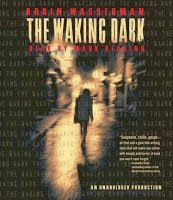
On a seemingly normal day in Oleander, Kansas, five people attacked anyone and everyone around them, using whatever weapons were at their disposal. Afterward, all the murderers killed themselves - except for one: Cass Porter. Cass doesn't remember killing, but she knows she's done it. She doesn't know why she would have done such a thing, but she knows she's a monster. She's locked away in a mental hospital, the sentence she received instead of prison, until the tornado hits.
No one understands why five people suddenly became murderers, killing people at random. When a tornado rips through Oleander, it destroys much of the town and kills off a great number of its population. The town is quarantined - for its safety, supposedly. The tornado also unleashes something inside of Oleander's surviving residents. They start to turn on each other. Small slights turn into bigger transgressions. Religion and small-town politics collide. People start dying again at their neighbors' hands, only this time, no one seems to care. In fact, many of the residents seem to regard it as business as usual. It turns out the Killing Day wasn't the worst thing to happen to Oleander; what came after the tornado will be much, much worse.
The story follows several teenagers in the town (a football player, the sister of a murdered child, a girl from the meth-dealing family, etc.), Cass among them, shifting perspectives but keeping everything third person past tense. Their stories overlap in different ways, and they do all end up together near the end (more or less).
This is a tough one to evaluate. It's not a "jump out at you scary" type of horror novel. I wouldn't say that I was ever on the edge of my seat, itching to hear what would happen next. It did feel a bit long to me. I think Wasserman sacrificed pacing in order to give us more in-depth character development. That's not a bad thing, on the whole - but it's not a choice I personally liked. This is not a quick read.
The key question, the one Wasserman clearly wants the listener/reader to ponder, long after the book is over, is "Did these people do what they did because they always had it in them, or did something external turn them into something they never were?" It's a question the surviving characters themselves address directly, with different theories. No conclusions are given. We're deliberately left to wonder. That is the power of the book - and also its most horrifying aspect, I think. What if all your neighbors, your friends, your family harbor the ability to do these terrible things? What if all it takes is something to set it off - and no one would even recognize the difference?
The body count is high. Wasserman doesn't shy away from killing off her main characters, some in particularly horrible ways. It does make the whole listening experience quite tense, since it's never clear who's going to make it to the next chapter - and who's going to end up burned alive. It doesn't ever feel exploitative, though, thanks to the time and care Wasserman has taken in creating her characters. They don't all like each other - and they shouldn't all like each other - but they're people you'll recognize. What they do to each other - both good and bad - is what we all do to each other. Even the horrible things start with a few minor things and escalate.
Kelly's read this one too, and she'd be able to speak much more to the Midwest setting. I grew up in Southern suburbia and have lived in a large-ish city plus a rural/suburban Southern hybrid, and none of them seem close to what I've seen a small town in the Midwest described as. Oleander, Kansas seems very suffocating, even before it's quarantined - and I'm sure this metaphor will not be lost on teens.
Give this to teens who appreciate thoughtful horror and a more leisurely pace. I'd recommend it on audio as well. Reader Mark Deakins gives the story the appropriate amount of gravitas without making it seem melodramatic. Though I do have to mention that one of his female characters sounds a bit like a character from South Park at times...
Finished copy received from the publisher.







 Related StoriesJuvie by Steve WatkinsThe Midnight Dress by Karen FoxleeDual Review: Engines of the Broken World by Jason Vanhee
Related StoriesJuvie by Steve WatkinsThe Midnight Dress by Karen FoxleeDual Review: Engines of the Broken World by Jason Vanhee
Published on October 30, 2013 22:00
October 29, 2013
Austin Reads
As I may have mentioned once or twice or a hundred times (particularly if you follow me on Twitter), I recently made a big move to Austin, Texas for a new job. It's an exciting place. We have people like Sandra Bullock! Matthew McConaughey! Lance Armstrong! Frodo! Richard Linklater! Sadly, we no longer have Leslie, but we do still have other natural wonders like Barton Springs Pool, Hippie Hollow and Mount Bonnell.
With Kidlitcon (in Austin this year!) fast approaching, Austin books and Austin authors have been on my mind. I always get a kick out of reading a novel and being able to recognize particular landmarks that may only be known to locals. (My previous town makes a brief cameo in The Passage, but the geography of restaurants and such is all wrong.)
Below is a short reading list of YA books set in Austin - some written by Austin authors, but not all. Descriptions are from Worldcat. Am I missing any? I'll give honorable mentions to books set in any Austin suburb.
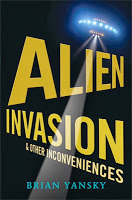
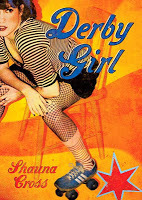
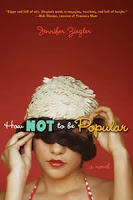
Alien Invasion and Other Inconveniences by Brian Yansky: When a race of aliens quickly takes over the earth, leaving most people
dead, high-schooler Jesse finds himself a slave to an inept alien
leader--a situation that brightens as Jesse develops telepathic powers
and attracts the attention of two beautiful girls. Kimberly's review
Derby Girl by Shauna Cross: When sixteen-year-old rebel Bliss Cavendar, who is miserable living in a
small Texas town with her beauty pageant-obsessed mother, secretly
joins a roller derby team under the name "Babe Ruthless," her life gets
better, although infinitely more confusing.
How Not to Be Popular by Jennifer Ziegler: Seventeen-year-old Sugar Magnolia Dempsey is tired of leaving friends
behind every time her hippie parents decide to move, but her plan to be
unpopular at her new Austin, Texas, school backfires when other students
join her on the path to "supreme dorkdom."
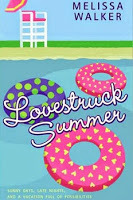
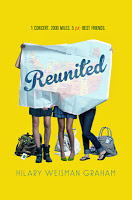
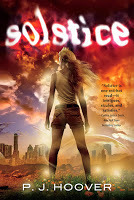
Lovestruck Summer by Melissa Walker: Quinn plans to enjoy her summer in Austin, Texas, working for a record
company, even though she has to live with her cousin Penny. Kelly's review
Reunited by Hilary Weisman Graham: Alice, Summer, and Tiernan were best friends who broke up at the same
time as their favorite band, but four years later, just before they are
preparing to go off to college, the girls reluctantly come back
together, each with her own motives, for a road trip from Massachusetts
to Austin, Texas, for the band's one-time-only reunion concert. Kelly's brief review
Solstice by P. J. Hoover: Eighteen-year-old Piper lives with her controlling mother amid a Global
Heating Crisis, but when she gets her first taste of freedom she
discovers a universe of gods and monsters where her true identity, kept
secret from her birth, could make all the difference in the world.
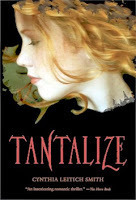
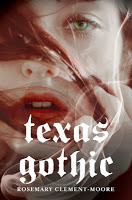
Tantalize by Cynthia Leitich Smith: When multiple murders in Austin, Texas, threaten the grand re-opening of
her family's vampire-themed restaurant, seventeen-year-old, orphaned
Quincie worries that her best friend-turned-love interest, Keiren, a
werewolf-in-training, may be the prime suspect.
Texas Gothic by Rosemary Clement-Moore: Seventeen-year-old Amy Goodnight has long been the one who makes her
family of witches seem somewhat normal to others, but while spending a
summer with her sister caring for their aunt's farm, Amy becomes the
center of weirdness when she becomes tied to a powerful ghost. Kimberly's review






 Related StoriesJuvie by Steve WatkinsHardcover to Paperback: Five to Check OutGuest Post: Scott Rader on Fandom, Fanmixes, and Reader's Advisory
Related StoriesJuvie by Steve WatkinsHardcover to Paperback: Five to Check OutGuest Post: Scott Rader on Fandom, Fanmixes, and Reader's Advisory
With Kidlitcon (in Austin this year!) fast approaching, Austin books and Austin authors have been on my mind. I always get a kick out of reading a novel and being able to recognize particular landmarks that may only be known to locals. (My previous town makes a brief cameo in The Passage, but the geography of restaurants and such is all wrong.)
Below is a short reading list of YA books set in Austin - some written by Austin authors, but not all. Descriptions are from Worldcat. Am I missing any? I'll give honorable mentions to books set in any Austin suburb.



Alien Invasion and Other Inconveniences by Brian Yansky: When a race of aliens quickly takes over the earth, leaving most people
dead, high-schooler Jesse finds himself a slave to an inept alien
leader--a situation that brightens as Jesse develops telepathic powers
and attracts the attention of two beautiful girls. Kimberly's review
Derby Girl by Shauna Cross: When sixteen-year-old rebel Bliss Cavendar, who is miserable living in a
small Texas town with her beauty pageant-obsessed mother, secretly
joins a roller derby team under the name "Babe Ruthless," her life gets
better, although infinitely more confusing.
How Not to Be Popular by Jennifer Ziegler: Seventeen-year-old Sugar Magnolia Dempsey is tired of leaving friends
behind every time her hippie parents decide to move, but her plan to be
unpopular at her new Austin, Texas, school backfires when other students
join her on the path to "supreme dorkdom."



Lovestruck Summer by Melissa Walker: Quinn plans to enjoy her summer in Austin, Texas, working for a record
company, even though she has to live with her cousin Penny. Kelly's review
Reunited by Hilary Weisman Graham: Alice, Summer, and Tiernan were best friends who broke up at the same
time as their favorite band, but four years later, just before they are
preparing to go off to college, the girls reluctantly come back
together, each with her own motives, for a road trip from Massachusetts
to Austin, Texas, for the band's one-time-only reunion concert. Kelly's brief review
Solstice by P. J. Hoover: Eighteen-year-old Piper lives with her controlling mother amid a Global
Heating Crisis, but when she gets her first taste of freedom she
discovers a universe of gods and monsters where her true identity, kept
secret from her birth, could make all the difference in the world.


Tantalize by Cynthia Leitich Smith: When multiple murders in Austin, Texas, threaten the grand re-opening of
her family's vampire-themed restaurant, seventeen-year-old, orphaned
Quincie worries that her best friend-turned-love interest, Keiren, a
werewolf-in-training, may be the prime suspect.
Texas Gothic by Rosemary Clement-Moore: Seventeen-year-old Amy Goodnight has long been the one who makes her
family of witches seem somewhat normal to others, but while spending a
summer with her sister caring for their aunt's farm, Amy becomes the
center of weirdness when she becomes tied to a powerful ghost. Kimberly's review







 Related StoriesJuvie by Steve WatkinsHardcover to Paperback: Five to Check OutGuest Post: Scott Rader on Fandom, Fanmixes, and Reader's Advisory
Related StoriesJuvie by Steve WatkinsHardcover to Paperback: Five to Check OutGuest Post: Scott Rader on Fandom, Fanmixes, and Reader's Advisory
Published on October 29, 2013 22:00
October 28, 2013
Juvie by Steve Watkins
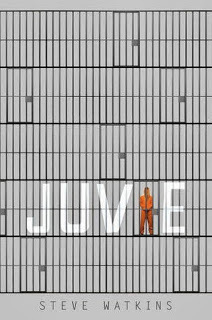 In early September, I wrote a post over at Book Riot featuring YA books about teens serving time. When I was doing my research for it, I ran across a book coming out in October by Steve Watkins called Juvie, which I immediately ordered for the library and put a hold on.
In early September, I wrote a post over at Book Riot featuring YA books about teens serving time. When I was doing my research for it, I ran across a book coming out in October by Steve Watkins called Juvie, which I immediately ordered for the library and put a hold on.And I am so glad that I did. It was supremely satisfying.
Sadie and her older sister Carla find themselves in a bad place one night, after Carla convinces Sadie to come out to a party with her and be her designated driver. Carla has a bit of a history -- she's been in trouble before, and she was a teen mom to a daughter named Lulu. But for the most part, Carla's pulled things together. She has a job and she and Lulu have their own place. Sadie believes this decision to take her sister to this party will be fine, especially because she'll be the designated driver. She knows that means Carla will get home okay.
Except, things don't go down quite that way.
Carla drinks a lot that night, and both Carla and Sadie find themselves face to face with a couple guys begging for a favor. Carla ensures Sadie that it'll be okay to drive the boys to the 7-11. Sadie, unable to rationalize it all and unable to fight her sister or the pressure of the two boys, decides she'll make the drive. But once they pull into the 7-11 lot, it's clear those boys aren't simply running in to pick up soda or beer. They're there for something more troubling.
That's the night Sadie and Carla are arrested.
Sadie's always been a good girl -- good grades, member of the basketball team, has a steady and solid boyfriend. That arrest marks the first time she's ever been in trouble. And because of that, she's pressured to do something in order to help save the reputation of her sister, as well as the rest of her family: take the fall for the entire evening's activities so that Carla doesn't find herself behind bars and little Lulu doesn't have to lose her mother. Because Sadie's record has been so good, she should have no problem with a short sentence, some probation, and having her record sealed. She's under 18. Carla is not.
It's a tough position for Sadie to find herself in, but it's clear her love for Carla and her family's well-being are what convince her to make the decision to take this deal. She could do a little jail time, have the records sealed, and move on with her life. Besides, she was there, she was aid to a crime, and, well, it shouldn't be so awful, should it?
There is, of course, a twist. It comes in the form of a judge who wasn't aware of how the case had been discussed already, wasn't keen on the fact Sadie wouldn't spill the names of the boys who caused the crime (she didn't have names), and who felt she was being a little insubordinate at her trial. She's sentenced to the full six months, and she's ordered to report to her sentence on Monday.
It wasn't as easy as she thought it would be, even though Sadie never believed it would be easy.
Juvie is set up very smartly: it's not a straight narrative. The story begins with Sadie preparing to turn herself in to juvie, but then it cuts back and forth between the night of the incident and her time in prison. No details about prison life are spared, and in many ways, that's what made this book so strong. There are cavity searches, there are hard and fast rules that must be followed, and there are cliques among the girls. There are fights and brawls. Juvie is no pleasant place, and Watkins has clearly done his research to make it clear this isn't the kind of place a girl like Sadie should ever be in -- nor the kind of place someone like Carla, who has been a girl with trouble in her past, would ever want to be, either.
Just because Sadie had been a good girl, though, doesn't mean she gets special treatment. She's like any other inmate. Except, she does befriend one of the guards. And it's that guard who becomes an ally to her and that guard finds Sadie an ally, as well.
Watkins's writing is pretty straightforward, but he doesn't need to make the prose spectacular because the story itself shines. He's developed a captivating character in Sadie because she is a good girl in a terrible situation, but she never plays that card. She believes it internally, but because she is a good girl, she realizes that following the rules inside prison are vital. And even more than that, she realizes that there are times when breaking the rules is also important. Or as she herself learns, there's a difference between being not guilty and being innocent.
Juvie will appeal to reluctant readers, as it zips along and tackles a really interesting topic with a setting that is hard to make unappealing. That's not to say this book won't appeal to non-reluctant readers; it definitely will. I think there's something here that has a wide range of appeal to readers who want hard realistic fiction that isn't afraid to be honest and painful. Sadie's a character who is easy to like, but she's not easy to like because she's put into this position. She's easy to like because she's relatable to many teens -- she comes from a family life that, yes has some challenges (aside from her sister and sister's child, Sadie's father is very ill and her parents are separated), but it's a family that still loves and supports despite those hangups. The position Sadie's in, wherein she's asked to make a choice that would impact her more than it would impact her sister, is one that readers understand she takes a lot of time to consider. And it's one that weighs on her over and over -- did she harm herself more in the end? Can she come out of this better? What would the future hold for her after six months in prison?
There are weaknesses in some of the characters in the book. I found the storyline with Sadie and her boyfriend to be underdeveloped. I wanted a little more of their backstory so that their separation had more emotional heft to it. Sadie and Carla's parents could have been further developed, too, as I found their father's story to be really fascinating. Of course, it wasn't the point of the story, but it offered enough that I think a little more backstory there would have made this even stronger. I'd argue this book could have used more emotional connection, as well: we know how Sadie feels by her actions, but I'd have enjoyed a few more internal moments. We get some -- particularly at the start of her sentence (she muses about F. Scott Fitzgerald's quote about the dark night of the soul) -- but even more would have taken this from a really good read to a great one.
The ending is entirely satisfying.
Pass Juvie along to readers who love stories about teens put into tough situations, particularly those who find themselves digging stories about teens in prison (your teen fans of Beyond Scared Straight or those who may have watched and enjoyed Orange is the New Black will find a lot to enjoy here). But more than that, this is a story about a teen forced to make an excruciatingly tough decision and who has to face the consequences for it -- for better or worse.
Juvie is available now. Reviewed from a library copy.







 Related StoriesThe Midnight Dress by Karen FoxleeThe Burning Sky by Sherry ThomasHardcover to Paperback: Five to Check Out
Related StoriesThe Midnight Dress by Karen FoxleeThe Burning Sky by Sherry ThomasHardcover to Paperback: Five to Check Out
Published on October 28, 2013 22:00
October 27, 2013
On Book Packagers and Literary Development Companies
I was perusing old college newspapers a few weeks ago and reading some of the columns I used to write. It's probably not entirely shocking that I wrote a lot about books back then. As I was rereading, I stumbled upon a story I wrote that I remember finding endlessly fascinating at the time and one which still captures my interest: ghostwriters. I can't put my finger on why ghostwriting is so interesting to me, but whenever I hear about a book or series that's been ghostwritten, I can't help finding out as much as I possibly can about the book, the "author," and why it was published that way. Most of the time, there aren't answers. But I find a lot of satisfaction in the questioning process.
Which leads me to a topic I've been thinking about now for a while -- book packagers and "literary development" companies. Like ghostwriting, it's a topic I seem to have more and more questions about and fewer and fewer answers to. The excitement and interest to me is in that mystery and in that endless series of "what about" and "why" questions.
It's likely you're well aware many big franchises in the YA book world are the result of book packagers. Packagers are companies that come up with concept and hire someone either within the company -- though more usually outside the company -- to write the concept. Pretty Little Liars, for example, isn't the original concept of Sarah Shepard, but instead, it was developed at Alloy and she is the name at the helm of the project. Other well-known older and more recent books from Alloy that might sound familiar to YA readers include Sisterhood of the Traveling Pants by Ann Brashares, Shadowlands by Kate Brian, The Luxe series by Anna Godbersen, and plenty of others you can check out over on Alloy's page. Many of Alloy's projects are meant to go beyond print, which is why many of these books do end up on television or made into movies -- they exploit the rights of as many avenues as they can in order to bring in bucks.
There's nothing seedy or off-putting in what Alloy does. It's a company that comes up with ideas that appeal to a wide audience; in Alloy's case, the bulk of the concepts for YA appeal specifically to teenage girls. They know what teen girls like and they know what will sell. Whereas many envision books as the work of one (or two or three) authors brainstorming, outlining, writing, revising, and selling their book in that manner, Alloy is a step inside many of those phases of the process as a means of ensuring their business of selling books is indeed a business. Although I cannot link to it directly because of the pay wall, I highly recommend checking out "The Gossip Mill" by Rebecca Mead in the October 19, 2009 edition of The New Yorker to read more about Alloy (if you have access to a good library database, you should find it without problem).
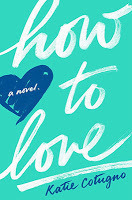 Since that piece, Alloy's developed another arm in their company, which they've called The Collaborative. Rather than have all of their products come from within, this is an opportunity for writers to pitch Alloy a manuscript and have Alloy work on the business end of it. One of the recent Collaborative products is a book you might have seen buzzed around lately: Katie Contugno's How to Love. There's a nice piece in Publisher's Weekly about this book and about her decision to go with Alloy's Collaborative.
Since that piece, Alloy's developed another arm in their company, which they've called The Collaborative. Rather than have all of their products come from within, this is an opportunity for writers to pitch Alloy a manuscript and have Alloy work on the business end of it. One of the recent Collaborative products is a book you might have seen buzzed around lately: Katie Contugno's How to Love. There's a nice piece in Publisher's Weekly about this book and about her decision to go with Alloy's Collaborative.
The idea of the packager isn't anything new: Nancy Drew and The Hardy Boys were products of a packager as well, known as the Stratemeyer Syndicate.
But what's been interesting over the last few years is that the face of the book packaging industry has shifted from being headed as a business by someone in the business world to being headed by authors themselves. It's likely unfair to call them packaging companies since many of these businesses aren't necessarily developing an entire package. They don't always pursue every avenue to sell the idea, though some do or note that that's one of their goals as a company. Instead, most are developing ideas and hiring writers to pursue this ideas, which are then sold to the publisher on behalf of the business (sometimes via an author's personal agent and sometimes the agent who is involved with the company). "Literary development" has been the popular term for these companies, though they don't operate much differently from packagers -- it's just on a smaller scale.
A few years ago, news emerged that author James Frey developed his own packaging company, Full Fathom Five. If you've not yet read the piece in New York Magazine about Full Fathom Five, spend a few minutes reading it because it's eye-opening. The long and short of it is Frey hires authors to write stories which have already been conceptualized, they get sold, and the authors who have worked to make the story happen are paid pennies for their work. There's not a question that the goal of Full Fathom Five is the money, as Frey's noted again and again how the YA market is where there are opportunities to be had when it comes to making bank on a story idea. He points to Twilight as proof.
What's come out of Full Fathom Five? Well, Frey's own collaborative effort with another author under the pseudonym Pittacus Lore titled I Am Number Four is one of them. But that's not the only one. Perhaps you've seen any of these books either on shelves or in catalogs for near-future publication:
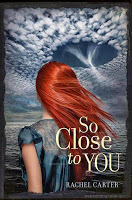
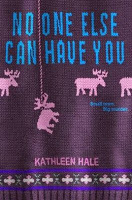
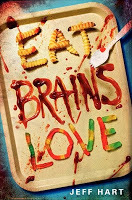
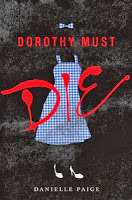
Much of who is working for Full Fathom Five is not disclosed, and a quick search doesn't bring up a website for the company (though there are plenty of pieces about the company, beyond the one I've linked to above). Discovering which books are a product of Full Fathom Five comes through a little Googling about the author. Or, if you're an avid reader of Publishers Weekly reviews, you'll discover a Full Fathom Five product at the end of a review in lieu of a traditional agent listing.
Before I go further, let me make something clear: most readers do not care. They don't care where the book comes from if it's a good book. And they shouldn't -- a good read is a good read, regardless of the origins, and this is an argument that comes up again and again. Just look at how people have read and interpreted Frey's A Million Little Pieces. Some people love it, even though they know the history of the "memoir." Other people find the means through which the book came to be off-putting and deceptive. But for the most part, readers don't care, as long as they get what it is they're looking for within the book itself.
Since these books are written by an author who is the face to the book, it's not like these books are lies or fabrications. Sure, they might be part of a team of writers (look at Erin Hunter), but the author still becomes the brand. Sometimes, the author will continue working for the packager exclusively and sometimes they will branch out on their own, either through using a pseudonym or the same name they've used before (more on that in a second).
What readers want is a good book and a good book will make them want to try the next book by that author.
So there's Alloy and there's Full Fathom Five, and then there are a few other literary development/packagers that have emerged even more recently. Let's start with one that might be familiar: Paper Lantern Lit. Founded by Lauren Oliver -- yes, that Lauren Oliver -- and Lexa Hillyer, the packager has produced a number of concepts that have gone on to be written and published. Both Oliver and Hillyer have backgrounds in editorial, and they've got their own staff of editors who help along with the writing process prior to the books being pitched to publishers.
Many of these Paper Lantern Lit titles may be familiar on your shelves:
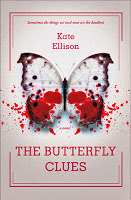
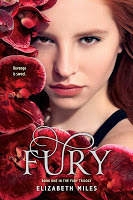
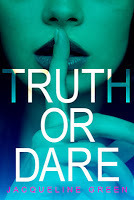
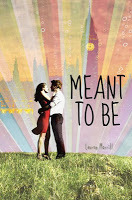
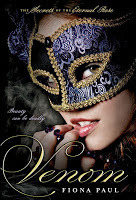
Like Full Fathom Five, Paper Lantern Lit is spearheaded by a well-known author. Unlike Full Fathom Five, the ethics aren't questionable. Authors "try out" to write for Paper Lantern, and those who have the chops to do it get the opportunity to write the concept as given to them. In other words, these authors have the ability to write, and this is their chance to break into the industry. Paper Lantern doesn't want stories; they want the writers for the stories they've created.
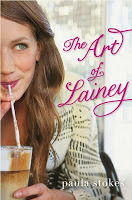 I noted earlier that sometimes authors choose to pursue publication in addition to what they've written and sold through a packager. Fiona Paul is one case. While the Venom series is through Paper Lantern Lit, Paul is "debuting" her first novel as herself in the spring of next year. It's called The Art of Lainey and it's written under a different name: Paula Stokes. I put debut in quotation marks because it's not a debut in the purest sense. She's published before; this is simply under a different name.
I noted earlier that sometimes authors choose to pursue publication in addition to what they've written and sold through a packager. Fiona Paul is one case. While the Venom series is through Paper Lantern Lit, Paul is "debuting" her first novel as herself in the spring of next year. It's called The Art of Lainey and it's written under a different name: Paula Stokes. I put debut in quotation marks because it's not a debut in the purest sense. She's published before; this is simply under a different name.
Paper Lantern talks on their website that so far, their success rate is 100%. That means every book they've pitched so far to the publishers has been picked up. Oliver and Hillyer's connection to the industry likely has helped their company and their authors secure the deals they've had. Likewise, those connections have most likely been a boon for Oliver and Hillyer's understanding of the market and what sells -- these aren't books that have done poorly. I highly suggest spending a little time reading this profile of Paper Latern Lit over at Fast Company to get an even better idea of how they operate and what their goals are.
Since Oliver and Hillyer's success has hit, two more literary development companies have emerged -- both within the last few months.
Wildcard Storymakers, spearheaded by author Veronica Rossi (of Under the Never Sky), her husband, and their friend, editor and ghostwriter Lorin Oberweger, kicked off earlier this year. Like Paper Lantern, Wildcard Storymakers develops concepts and chooses writers to develop them. Also like Paper Lantern, it was created by an author herself, one who, like Lauren Oliver, saw success with her own YA series.
Wildcard plans to focus on middle grade, young adult, and "new adult" titles. They've had one deal pop up so far, which was for a book called Boomerang, a "new adult" that will published through William Morrow next year. It's being written by Rossi and Oberweger under the name Noelle August, and you can learn a little more about it on Goodreads. As of this writing, that is the only book under contract so far from the studio.
The second development company to spring up recently is Cake Literary, which made its announcement last week when founders Sona Charaipotra and Dhonielle Clayton's first book from Cake was announced in Publishers Weekly. The book, titled Dark Pointe, will be authored by the pair who founded the company, and you can read more about the book over here.
Unlike Oliver or Rossi's companies, Cake wasn't founded after the authors had published. Instead, this is the first book the two have developed and written and it's the first sale for the company. Likewise, the focus of their company differs a little bit from that of Paper Lantern and Wildcard -- the goal is to develop, produce, and publish more diverse titles within the middle grade, YA, and women's fiction arenas. The company's site, which isn't complete yet, suggests their vision is for books that are highly commercial but also decidedly literary, an interesting use of terms that have, for a long time, been used as binaries to one another, even if they aren't necessarily so (in other words, many believe a book is either commercial or literary, rather than a combination of the two, though such combinations certainly exist and get published). The pitch for Dark Pointe likens the book to Pretty Little Liars -- a highly commercial book (...developed by Alloy).
What does all of this mean? In all honesty, not a whole lot when it comes to reading books and getting them into the hands of the readers who will love them. But I find the growth in packagers/development companies recently to be fascinating, particularly because two of them are headed by authors who've had success and made connections within the industry. It's clear they're looking at this from a business perspective and proceeding with that in mind. I'm interested in seeing what comes of Cake, too, particularly as their goal is to develop more diverse titles and have them published -- and I'm curious, too, whether the backing of a literary development company such as theirs really adds more diverse titles to the YA field. What is it they'd be able to make happen that, say, other authors who've been writing these stories are not as successful at achieving?
There's a lot more complexity to packagers and the non-reader end of the industry I've not even touched on (such as pay and exploitation of rights) that interest me, too. And why now? What's the field of middle grade, YA, and "new adult" offering at this moment that's brought these development companies out and what will keep them going? How many authors who get their starts here will continue with them through their careers and how many will go on to publish independently -- and how different will their works read and feel?
It's an endlessly fascinating series of questions that don't have answers to them yet and that might not ever have answers.
Have you read any books from the packagers or literary development companies? Does knowing their origins change the story for you as a reader? Does it change how you approach selling the book to other readers, especially teenagers? I'd love to know your thoughts!







Which leads me to a topic I've been thinking about now for a while -- book packagers and "literary development" companies. Like ghostwriting, it's a topic I seem to have more and more questions about and fewer and fewer answers to. The excitement and interest to me is in that mystery and in that endless series of "what about" and "why" questions.
It's likely you're well aware many big franchises in the YA book world are the result of book packagers. Packagers are companies that come up with concept and hire someone either within the company -- though more usually outside the company -- to write the concept. Pretty Little Liars, for example, isn't the original concept of Sarah Shepard, but instead, it was developed at Alloy and she is the name at the helm of the project. Other well-known older and more recent books from Alloy that might sound familiar to YA readers include Sisterhood of the Traveling Pants by Ann Brashares, Shadowlands by Kate Brian, The Luxe series by Anna Godbersen, and plenty of others you can check out over on Alloy's page. Many of Alloy's projects are meant to go beyond print, which is why many of these books do end up on television or made into movies -- they exploit the rights of as many avenues as they can in order to bring in bucks.
There's nothing seedy or off-putting in what Alloy does. It's a company that comes up with ideas that appeal to a wide audience; in Alloy's case, the bulk of the concepts for YA appeal specifically to teenage girls. They know what teen girls like and they know what will sell. Whereas many envision books as the work of one (or two or three) authors brainstorming, outlining, writing, revising, and selling their book in that manner, Alloy is a step inside many of those phases of the process as a means of ensuring their business of selling books is indeed a business. Although I cannot link to it directly because of the pay wall, I highly recommend checking out "The Gossip Mill" by Rebecca Mead in the October 19, 2009 edition of The New Yorker to read more about Alloy (if you have access to a good library database, you should find it without problem).
 Since that piece, Alloy's developed another arm in their company, which they've called The Collaborative. Rather than have all of their products come from within, this is an opportunity for writers to pitch Alloy a manuscript and have Alloy work on the business end of it. One of the recent Collaborative products is a book you might have seen buzzed around lately: Katie Contugno's How to Love. There's a nice piece in Publisher's Weekly about this book and about her decision to go with Alloy's Collaborative.
Since that piece, Alloy's developed another arm in their company, which they've called The Collaborative. Rather than have all of their products come from within, this is an opportunity for writers to pitch Alloy a manuscript and have Alloy work on the business end of it. One of the recent Collaborative products is a book you might have seen buzzed around lately: Katie Contugno's How to Love. There's a nice piece in Publisher's Weekly about this book and about her decision to go with Alloy's Collaborative. The idea of the packager isn't anything new: Nancy Drew and The Hardy Boys were products of a packager as well, known as the Stratemeyer Syndicate.
But what's been interesting over the last few years is that the face of the book packaging industry has shifted from being headed as a business by someone in the business world to being headed by authors themselves. It's likely unfair to call them packaging companies since many of these businesses aren't necessarily developing an entire package. They don't always pursue every avenue to sell the idea, though some do or note that that's one of their goals as a company. Instead, most are developing ideas and hiring writers to pursue this ideas, which are then sold to the publisher on behalf of the business (sometimes via an author's personal agent and sometimes the agent who is involved with the company). "Literary development" has been the popular term for these companies, though they don't operate much differently from packagers -- it's just on a smaller scale.
A few years ago, news emerged that author James Frey developed his own packaging company, Full Fathom Five. If you've not yet read the piece in New York Magazine about Full Fathom Five, spend a few minutes reading it because it's eye-opening. The long and short of it is Frey hires authors to write stories which have already been conceptualized, they get sold, and the authors who have worked to make the story happen are paid pennies for their work. There's not a question that the goal of Full Fathom Five is the money, as Frey's noted again and again how the YA market is where there are opportunities to be had when it comes to making bank on a story idea. He points to Twilight as proof.
What's come out of Full Fathom Five? Well, Frey's own collaborative effort with another author under the pseudonym Pittacus Lore titled I Am Number Four is one of them. But that's not the only one. Perhaps you've seen any of these books either on shelves or in catalogs for near-future publication:




Much of who is working for Full Fathom Five is not disclosed, and a quick search doesn't bring up a website for the company (though there are plenty of pieces about the company, beyond the one I've linked to above). Discovering which books are a product of Full Fathom Five comes through a little Googling about the author. Or, if you're an avid reader of Publishers Weekly reviews, you'll discover a Full Fathom Five product at the end of a review in lieu of a traditional agent listing.
Before I go further, let me make something clear: most readers do not care. They don't care where the book comes from if it's a good book. And they shouldn't -- a good read is a good read, regardless of the origins, and this is an argument that comes up again and again. Just look at how people have read and interpreted Frey's A Million Little Pieces. Some people love it, even though they know the history of the "memoir." Other people find the means through which the book came to be off-putting and deceptive. But for the most part, readers don't care, as long as they get what it is they're looking for within the book itself.
Since these books are written by an author who is the face to the book, it's not like these books are lies or fabrications. Sure, they might be part of a team of writers (look at Erin Hunter), but the author still becomes the brand. Sometimes, the author will continue working for the packager exclusively and sometimes they will branch out on their own, either through using a pseudonym or the same name they've used before (more on that in a second).
What readers want is a good book and a good book will make them want to try the next book by that author.
So there's Alloy and there's Full Fathom Five, and then there are a few other literary development/packagers that have emerged even more recently. Let's start with one that might be familiar: Paper Lantern Lit. Founded by Lauren Oliver -- yes, that Lauren Oliver -- and Lexa Hillyer, the packager has produced a number of concepts that have gone on to be written and published. Both Oliver and Hillyer have backgrounds in editorial, and they've got their own staff of editors who help along with the writing process prior to the books being pitched to publishers.
Many of these Paper Lantern Lit titles may be familiar on your shelves:





Like Full Fathom Five, Paper Lantern Lit is spearheaded by a well-known author. Unlike Full Fathom Five, the ethics aren't questionable. Authors "try out" to write for Paper Lantern, and those who have the chops to do it get the opportunity to write the concept as given to them. In other words, these authors have the ability to write, and this is their chance to break into the industry. Paper Lantern doesn't want stories; they want the writers for the stories they've created.
 I noted earlier that sometimes authors choose to pursue publication in addition to what they've written and sold through a packager. Fiona Paul is one case. While the Venom series is through Paper Lantern Lit, Paul is "debuting" her first novel as herself in the spring of next year. It's called The Art of Lainey and it's written under a different name: Paula Stokes. I put debut in quotation marks because it's not a debut in the purest sense. She's published before; this is simply under a different name.
I noted earlier that sometimes authors choose to pursue publication in addition to what they've written and sold through a packager. Fiona Paul is one case. While the Venom series is through Paper Lantern Lit, Paul is "debuting" her first novel as herself in the spring of next year. It's called The Art of Lainey and it's written under a different name: Paula Stokes. I put debut in quotation marks because it's not a debut in the purest sense. She's published before; this is simply under a different name. Paper Lantern talks on their website that so far, their success rate is 100%. That means every book they've pitched so far to the publishers has been picked up. Oliver and Hillyer's connection to the industry likely has helped their company and their authors secure the deals they've had. Likewise, those connections have most likely been a boon for Oliver and Hillyer's understanding of the market and what sells -- these aren't books that have done poorly. I highly suggest spending a little time reading this profile of Paper Latern Lit over at Fast Company to get an even better idea of how they operate and what their goals are.
Since Oliver and Hillyer's success has hit, two more literary development companies have emerged -- both within the last few months.
Wildcard Storymakers, spearheaded by author Veronica Rossi (of Under the Never Sky), her husband, and their friend, editor and ghostwriter Lorin Oberweger, kicked off earlier this year. Like Paper Lantern, Wildcard Storymakers develops concepts and chooses writers to develop them. Also like Paper Lantern, it was created by an author herself, one who, like Lauren Oliver, saw success with her own YA series.
Wildcard plans to focus on middle grade, young adult, and "new adult" titles. They've had one deal pop up so far, which was for a book called Boomerang, a "new adult" that will published through William Morrow next year. It's being written by Rossi and Oberweger under the name Noelle August, and you can learn a little more about it on Goodreads. As of this writing, that is the only book under contract so far from the studio.
The second development company to spring up recently is Cake Literary, which made its announcement last week when founders Sona Charaipotra and Dhonielle Clayton's first book from Cake was announced in Publishers Weekly. The book, titled Dark Pointe, will be authored by the pair who founded the company, and you can read more about the book over here.
Unlike Oliver or Rossi's companies, Cake wasn't founded after the authors had published. Instead, this is the first book the two have developed and written and it's the first sale for the company. Likewise, the focus of their company differs a little bit from that of Paper Lantern and Wildcard -- the goal is to develop, produce, and publish more diverse titles within the middle grade, YA, and women's fiction arenas. The company's site, which isn't complete yet, suggests their vision is for books that are highly commercial but also decidedly literary, an interesting use of terms that have, for a long time, been used as binaries to one another, even if they aren't necessarily so (in other words, many believe a book is either commercial or literary, rather than a combination of the two, though such combinations certainly exist and get published). The pitch for Dark Pointe likens the book to Pretty Little Liars -- a highly commercial book (...developed by Alloy).
What does all of this mean? In all honesty, not a whole lot when it comes to reading books and getting them into the hands of the readers who will love them. But I find the growth in packagers/development companies recently to be fascinating, particularly because two of them are headed by authors who've had success and made connections within the industry. It's clear they're looking at this from a business perspective and proceeding with that in mind. I'm interested in seeing what comes of Cake, too, particularly as their goal is to develop more diverse titles and have them published -- and I'm curious, too, whether the backing of a literary development company such as theirs really adds more diverse titles to the YA field. What is it they'd be able to make happen that, say, other authors who've been writing these stories are not as successful at achieving?
There's a lot more complexity to packagers and the non-reader end of the industry I've not even touched on (such as pay and exploitation of rights) that interest me, too. And why now? What's the field of middle grade, YA, and "new adult" offering at this moment that's brought these development companies out and what will keep them going? How many authors who get their starts here will continue with them through their careers and how many will go on to publish independently -- and how different will their works read and feel?
It's an endlessly fascinating series of questions that don't have answers to them yet and that might not ever have answers.
Have you read any books from the packagers or literary development companies? Does knowing their origins change the story for you as a reader? Does it change how you approach selling the book to other readers, especially teenagers? I'd love to know your thoughts!








Published on October 27, 2013 22:00
October 24, 2013
Bright Before Sunrise by Tiffany Schmidt: A Short Review, an Excerpt, and Giveaway
Over at Book Riot this week, I wrote about books that take place in 24 hours or less. It's a time constraint I find endlessly fascinating, and I talked a little bit about why over in that post, as well as included a lengthy reading list of YA books that take place in that short a time span.
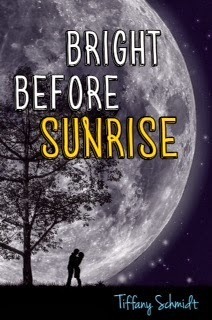
One of the books I talked about was Tiffany Schmidt's forthcoming Bright Before Sunrise, which comes out next February 18. It's really unfair to talk about a book this far in advance, but I wanted to talk about it a little bit today not just because it fit with the theme of short time frames, but also because it hits on a theme that is near and dear to my heart: girls and the expectation that they be "nice."
You may remember I talked about the idea of girls having to be nice last winter. There's an expectation that girls have to be nice, even if it means sacrificing what it is they desire. Socially, girls are told that they need to be nice and kind. They're shown that in the media over and over, and it becomes ingrained in how they act.
Schmidt's book plays against this very idea. Brighton, one of the main characters in the book, is led to believe that being nice is more important than going after what it is she wants. She fears breaking beyond the label of nice -- she can't imagine what it would be like to be seen as anything but nice. But in the today of this story, something huge is going on in her life, and for once, Brighton wants to be anything but "nice."
Jonah, the second main character in the book, is a new boy in town. And before you start to believe this is going to be a whirlwind romance, let me assure you it's not. Yes, there might be a little bit of romance near the end, but this isn't about Brighton asserting her independence and undermining her "nice" reputation by getting with a bad boy. It's about Jonah challenging Brighton to examine her own conception of self. He asks her to look at herself and her needs and wants and consider the importance of those over the importance of being seen as "nice" and "kind" and "liked" in the eyes of other people.
No, this isn't a story about a boy who changes Brighton's life. And no, this isn't a story about a girl who changes Jonah's life. It's about two people who challenge one another to critically examine their own lives on their own terms and come to conclusions for themselves. Can you strip yourself down to your barest essentials and be happy with what's looking back? If not, how can you make that happen? Those are the questions at the heart of Schmidt's book.
I plan on a longer review when the book is nearer to publication, but in the tradition of doing previews of books I've read and loved a little early, I wanted to get this book on the radar of readers who are looking for realistic fiction of this ilk. I had the opportunity to read this a few months ago, and it's still on my mind. I loved Brighton for being imperfect and striving to figure out how she can better herself while fretting about how others would think about her for doing so -- it's realistic. We all do this. I loved Jonah and how, despite not having all of the best cards in his hand, makes what he can of them while not worrying what other people think of him, even when maybe he could consider that and find his experiences in his new school enjoyable, rather than something to simply get through. Both characters are complex and dynamic, and the ways their lives collide in one night are equal parts funny as they are authentic.
When Tiffany asked if I'd be interested in giving away an advanced copy of Bright Before Sunrise, I couldn't say no. This is a book that I am very enthusiastic about and one which I hope gets into the hands of many, many readers when it's available.
Before that, though, I've got an extra treat. Tiffany was kind enough to choose an excerpt from the book for me to share with readers. I had hoped to post this as full text, but for a number of reasons, including formatting and design, I had to keep it intact as a document.
This particular scene is one I feel really sets us up to understand what Brighton's goals are prior to questioning her need to be liked. It's here when she challenges herself to make Jonah like her. Because her goal to this point has been to be liked and be nice, in what could have been an awkward and real situation, she chooses to pursue being liked to fill that silence.
Bright Before Sunrise by Tiffany Schmidt (Excerpt)
Curious now? I've got THREE copies to give away, along with a tote bag featuring the book cover, and the bag itself will be stuffed with swag. That is THREE prize packs all together.
Open to US residents, you can enter below. It looks like this:
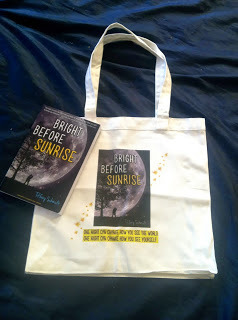
This is a book I cannot wait to talk about more and it's one I cannot wait to get into the hands of my teen readers, particularly those girls who believe the way through life is being nice and sacrificing their own voices in the name of being liked.
Loading...






 Related StoriesThe Million Mark.What Goes Around by Courtney Summers -- A GiveawayTwitterview: Phoebe North
Related StoriesThe Million Mark.What Goes Around by Courtney Summers -- A GiveawayTwitterview: Phoebe North

One of the books I talked about was Tiffany Schmidt's forthcoming Bright Before Sunrise, which comes out next February 18. It's really unfair to talk about a book this far in advance, but I wanted to talk about it a little bit today not just because it fit with the theme of short time frames, but also because it hits on a theme that is near and dear to my heart: girls and the expectation that they be "nice."
You may remember I talked about the idea of girls having to be nice last winter. There's an expectation that girls have to be nice, even if it means sacrificing what it is they desire. Socially, girls are told that they need to be nice and kind. They're shown that in the media over and over, and it becomes ingrained in how they act.
Schmidt's book plays against this very idea. Brighton, one of the main characters in the book, is led to believe that being nice is more important than going after what it is she wants. She fears breaking beyond the label of nice -- she can't imagine what it would be like to be seen as anything but nice. But in the today of this story, something huge is going on in her life, and for once, Brighton wants to be anything but "nice."
Jonah, the second main character in the book, is a new boy in town. And before you start to believe this is going to be a whirlwind romance, let me assure you it's not. Yes, there might be a little bit of romance near the end, but this isn't about Brighton asserting her independence and undermining her "nice" reputation by getting with a bad boy. It's about Jonah challenging Brighton to examine her own conception of self. He asks her to look at herself and her needs and wants and consider the importance of those over the importance of being seen as "nice" and "kind" and "liked" in the eyes of other people.
No, this isn't a story about a boy who changes Brighton's life. And no, this isn't a story about a girl who changes Jonah's life. It's about two people who challenge one another to critically examine their own lives on their own terms and come to conclusions for themselves. Can you strip yourself down to your barest essentials and be happy with what's looking back? If not, how can you make that happen? Those are the questions at the heart of Schmidt's book.
I plan on a longer review when the book is nearer to publication, but in the tradition of doing previews of books I've read and loved a little early, I wanted to get this book on the radar of readers who are looking for realistic fiction of this ilk. I had the opportunity to read this a few months ago, and it's still on my mind. I loved Brighton for being imperfect and striving to figure out how she can better herself while fretting about how others would think about her for doing so -- it's realistic. We all do this. I loved Jonah and how, despite not having all of the best cards in his hand, makes what he can of them while not worrying what other people think of him, even when maybe he could consider that and find his experiences in his new school enjoyable, rather than something to simply get through. Both characters are complex and dynamic, and the ways their lives collide in one night are equal parts funny as they are authentic.
When Tiffany asked if I'd be interested in giving away an advanced copy of Bright Before Sunrise, I couldn't say no. This is a book that I am very enthusiastic about and one which I hope gets into the hands of many, many readers when it's available.
Before that, though, I've got an extra treat. Tiffany was kind enough to choose an excerpt from the book for me to share with readers. I had hoped to post this as full text, but for a number of reasons, including formatting and design, I had to keep it intact as a document.
This particular scene is one I feel really sets us up to understand what Brighton's goals are prior to questioning her need to be liked. It's here when she challenges herself to make Jonah like her. Because her goal to this point has been to be liked and be nice, in what could have been an awkward and real situation, she chooses to pursue being liked to fill that silence.
Bright Before Sunrise by Tiffany Schmidt (Excerpt)
Curious now? I've got THREE copies to give away, along with a tote bag featuring the book cover, and the bag itself will be stuffed with swag. That is THREE prize packs all together.
Open to US residents, you can enter below. It looks like this:

This is a book I cannot wait to talk about more and it's one I cannot wait to get into the hands of my teen readers, particularly those girls who believe the way through life is being nice and sacrificing their own voices in the name of being liked.
Loading...







 Related StoriesThe Million Mark.What Goes Around by Courtney Summers -- A GiveawayTwitterview: Phoebe North
Related StoriesThe Million Mark.What Goes Around by Courtney Summers -- A GiveawayTwitterview: Phoebe North
Published on October 24, 2013 22:00
Kid Lit Con 2013: The Details!
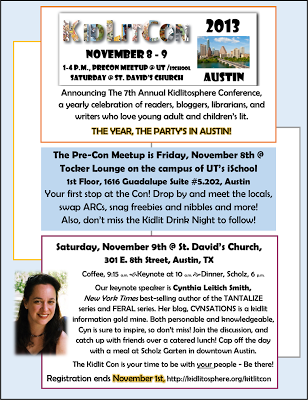
Have you been thinking about coming down to Austin for Kid Lit Con but haven't felt ready to commit? Now we have all of the details for this excellent, intimate, and more than worthwhile conference set -- and we extended the registration deadline until November 1.
The sessions have all been picked out and slotted, and you can check them all out right here. We've also got plans set for Friday's pre-con to be held at the University of Texas's iSchool.
Kimberly and I are really excited to share she and I will be presenting together -- for the first time ever! -- and we're going to talk about critical reviews and why they matter. We'll talk a little bit about our process in writing them and why we find them to be so valuable.
I love Kid Lit Con and I love Austin (the iSchool is where Kimberly and I met and where this whole blog started) and I'm excited to connect with old friends and meet new ones.








Published on October 24, 2013 18:44
October 22, 2013
What I'm Reading Now
I actually haven't been reading much lately. I moved recently and got a new job, which was hugely stressful (as I'm sure many of you know), and when I'm stressed, I find it really difficult to get focused enough to take in a story. Audiobooks are a lot easier, but print books, something I have to stay still for...not so much. Thankfully, over the past few days, I've started feeling more "at home," and I've started back up reading at a more usual pace for me.
And here's what I've been reading lately. Longer reviews will come later, but for those of you with short attention spans - this post is for you.
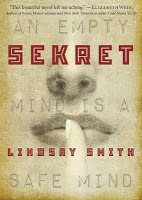
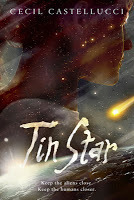
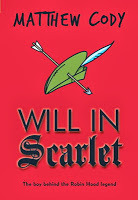
Sekret by Lindsay Smith
Yulia is a teenager in the Soviet Union in the 1960s. She's psychic - she can read people's thoughts and see memories via touch - which makes her a prime target for the KGB. When she slips one day, the KGB gets her and forces her to work for them as a spy, threatening her family if she doesn't comply. I actually really dig the combination of historical fiction and supernatural powers. The writing is good, and Smith is very skilled at stringing the reader along - giving us just enough information at just the right time to ensure we need to read just one more page. It's clear there are a lot of secrets here (please forgive my pun), and I hope the final revelations don't disappoint.
Tin Star by Cecil Castellucci
Aliens! Space stations! Attempted murder! This book has nearly everything I love. Tula Bane is preparing with her family and other members of the Children of Earth to head toward their new colony, the planet Beta Granade, when she notices something amiss: the grain they are supposed to take with them isn't on the ship. When she points this out to the leader, he tries to kill her. She's left for dead, the ship takes off without her, and she has to find a way to survive on the space station where she's been stranded, the only human among hundreds of aliens who all regard her species as less than desirable at best and unworthy of life at worst. It reminds me a bit of Babylon 5, complete with a version of "Down Below" where Tula scrapes by, except Tula's space station has nothing to do with diplomacy. I always love seeing what writers envision for the future, particularly when the future involves aliens, but I found this future world a bit too sketchy for my tastes (albeit fascinating nonetheless).
Will in Scarlet by Matthew Cody
Cody re-imagines the story of Will Scarlet, one of Robin Hood's merry men. Will is 13 years old, and his story reads as older middle grade or younger YA. It's great on audio, which is how I'm consuming it. It feels like a bit of a throwback to the stories I listened to a lot as a kid myself: lots of adventure, a little (light-handed) moralizing, plus a kid who acts like a kid and has kid thoughts. (For example, Will is more concerned with Christmas presents than learning about diplomacy.) The only thing that isn't working for me are the excerpts at the beginning of each chapter. There's a brief quotation taken from somewhere in the middle of the chapter, placed at the beginning of the chapter, and attributed to the character who says it. Then we hear it again in context later on. I know it's meant to serve as a teaser, an enticement to read on, but the choice of quotations so far hasn't made me think "Oh, I simply must figure out how that fits into everything." Instead it just seems repetitive.






 Related StoriesWhat I'm Reading Now
Related StoriesWhat I'm Reading Now
And here's what I've been reading lately. Longer reviews will come later, but for those of you with short attention spans - this post is for you.



Sekret by Lindsay Smith
Yulia is a teenager in the Soviet Union in the 1960s. She's psychic - she can read people's thoughts and see memories via touch - which makes her a prime target for the KGB. When she slips one day, the KGB gets her and forces her to work for them as a spy, threatening her family if she doesn't comply. I actually really dig the combination of historical fiction and supernatural powers. The writing is good, and Smith is very skilled at stringing the reader along - giving us just enough information at just the right time to ensure we need to read just one more page. It's clear there are a lot of secrets here (please forgive my pun), and I hope the final revelations don't disappoint.
Tin Star by Cecil Castellucci
Aliens! Space stations! Attempted murder! This book has nearly everything I love. Tula Bane is preparing with her family and other members of the Children of Earth to head toward their new colony, the planet Beta Granade, when she notices something amiss: the grain they are supposed to take with them isn't on the ship. When she points this out to the leader, he tries to kill her. She's left for dead, the ship takes off without her, and she has to find a way to survive on the space station where she's been stranded, the only human among hundreds of aliens who all regard her species as less than desirable at best and unworthy of life at worst. It reminds me a bit of Babylon 5, complete with a version of "Down Below" where Tula scrapes by, except Tula's space station has nothing to do with diplomacy. I always love seeing what writers envision for the future, particularly when the future involves aliens, but I found this future world a bit too sketchy for my tastes (albeit fascinating nonetheless).
Will in Scarlet by Matthew Cody
Cody re-imagines the story of Will Scarlet, one of Robin Hood's merry men. Will is 13 years old, and his story reads as older middle grade or younger YA. It's great on audio, which is how I'm consuming it. It feels like a bit of a throwback to the stories I listened to a lot as a kid myself: lots of adventure, a little (light-handed) moralizing, plus a kid who acts like a kid and has kid thoughts. (For example, Will is more concerned with Christmas presents than learning about diplomacy.) The only thing that isn't working for me are the excerpts at the beginning of each chapter. There's a brief quotation taken from somewhere in the middle of the chapter, placed at the beginning of the chapter, and attributed to the character who says it. Then we hear it again in context later on. I know it's meant to serve as a teaser, an enticement to read on, but the choice of quotations so far hasn't made me think "Oh, I simply must figure out how that fits into everything." Instead it just seems repetitive.







 Related StoriesWhat I'm Reading Now
Related StoriesWhat I'm Reading Now
Published on October 22, 2013 22:00
October 21, 2013
Hardcover to Paperback: Five to Check Out
One of my favorite things to look at in publisher catalogs each season are the titles being released in paperback and the changes that the covers may have undergone in the process. Sometimes it's a huge change. Other times, it's really subtle. Sometimes, it nails the story better than the original or highlights a different aspect of the story than the hardcover image did. And other times, it's way off the mark.
In this edition of hardcover to paperback, most of the titles I wanted to talk about didn't have huge changes. Many maintained a look they'd had in hardcover with slight tweaks (though one of the covers below got an entirely new look). None of these are bad changes, but some of them make me wonder what the change intends to do for the book in terms of selling it. If it's not that different from the original, it makes me wonder why the change happened at all.
Let's start with the big change.
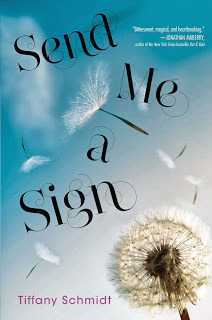
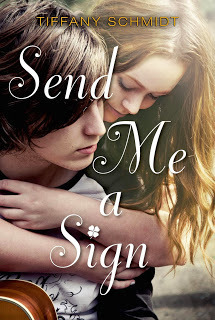
The hardcover edition of Tiffany Schmidt's Send Me a Sign is graphic and text driven -- it plays into the idea of superstitions, which is a big element of the book. Mia, the main character, believes in signs. To me, the cover has a small element of sadness to it. While it's bright, when you know what the book is about, the cover may suggest that there's not necessarily a happy ending to the story. It's a book about a girl diagnosed with cancer, and the white dandelion with its petals floating away may suggest death more than it does life. In many ways, the cover doesn't tell you a whole lot about the story, though I think it does look like a YA novel. The swirly font may play into that a little bit. Note that there is a blurb.
The paperback cover of Send Me a Sign is something completely different. While anchored by one image of a boy and a girl, rather than font and a non-person image, it doesn't do away with the original design completely. The font for the title is still swirly, and there is an homage to the signs and superstitions element to the plot with the four-leaf clover as the dot in the "i" for sign. Although I think the image itself isn't entirely memorable -- the couple looks like a couple that graces many a YA cover -- what I love is that this cover speaks a lot more to both the content of the book and the readership of the book. There is a big romantic element to the story, and this image drives that message much more than the hardcover does. Teen readers who see this cover will know much more readily whether this is a book they want to read or not because it looks like many other books featuring similarly appealing story lines.
I happen to like both of the covers for this one. The first because it's different from a lot of YA covers out there, and the second because it speaks better to the story.
Send Me a Sign will be available in paperback on January 14, 2014.
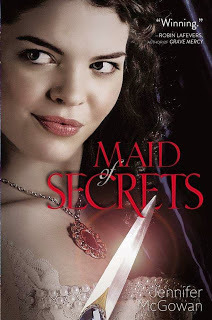
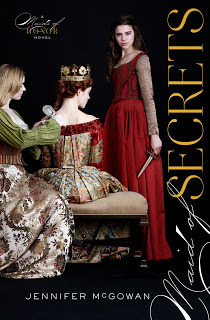
Jennifer McGowan's Maid of Secrets is getting one of those makeovers I'm not sure I completely understand. On the left is the original hardcover. It's not necessarily the kind of cover that stands out, but it also speaks to the content of the book. The girl has a great look on her face, including a fierceness in her eyes with just enough of a smile that it's not a scary look. I love the dagger in her hands, since it offers up a little bit of an idea of the time frame of the story and even a little bit about what may be at stake. The font for the title isn't necessarily memorable, but it works with the image to allow that image to stand out. And note that there is a blurb on the cover -- a simple "Winning," from Robin LaFevers, who is probably the perfect name to have gracing the cover of a book like this with a blurb. In many ways, I'd say the look of this particular cover suggests it's a worthwhile read alike to LeFevers's own series. I'm a big fan of cover alikes, since it does a lot of service to readers who want a book like one they've read before but don't necessarily want to ask for help. It's passive and easy.
The paperback look of the cover isn't bad, but it also doesn't do anything different. Sure, there are now three girls instead of a single one. What's weird is that this cover seems to remove a lot of the power that the hardcover had, making it almost more of a story about the three girls than about power or intrigue. The girl in the middle is having her hair brushed, and the focus of the image is no longer on the expression on one girl's face -- it's instead on the dresses the three girls have. I think in many ways there is a removal of power in this cover. There is still a dagger in the girl on the right's hand, but look at how it's much more an accessory to her dress than it is a tool she plans on using. The new cover changes up the title font, and I quite like it, though I think there is a lot more artistry at play with it than there is necessarily power. There's no longer a blurb on the cover, as it's been replaced with a note that this book is the first in a series -- I actually find that helpful to be on the cover, since it will help readers know there are other books to come.
That said, will readers think that the paperback version of Maid of Secrets may appeal to readers who liked Robin LaFevers's series? I'm not entirely sure. I don't think they'll be turned off by it, but I think they may not make the connection as readily. While I like both covers, they convey much different things, and I think the hardcover edges out the paperback for me.
The paperback edition of McGowan's book will be available June 24, 2014.
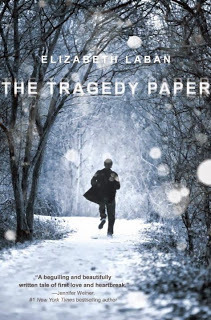

The Tragedy Paper by Elizabeth Laban fascinates me from a cover perspective. It's not entirely memorable, but it's also not entirely forgettable either. There are a lot of elements in the cover that make it both: it's a guy running away from something in a wooded area. There's snow on the ground and snow falling. I feel like this describes a ton of covers, but I also feel like it describes this cover. I find the font for the title distracting and hard to read because it's been made to look blurry and jagged. Since it's white, that only adds to the challenge of not feeling like my eyes struggle to focus on it (basic design principles suggest that white font on a dark background is simply harder to read, no matter what). Note that the blurb for this book comes from an adult fiction author -- Jennifer Weiner. That says a lot to me, too, particularly that this book may be aiming to be a crossover hit, as well as a book that is trying to be on trend with blurbs from well-known, New York Times Bestselling adult authors (see John Green's blurb of The Fault in Our Stars from Jodi Picoult). The cover is being packaged in such a way that it looks like the kind of book that will receive award consideration or recognition. It's an iconic-like cover with a blurb from someone well-known in the business, even beyond the YA world. This is not a bad cover.
But that paperback. Let's talk about a cover that is meant for adults and not teens.
The cover for the paperback looks like a movie poster, and not in a good way. There is far too much going on in terms of design, with the original boy running through the woods layered on top of a girl who is looking away with a sadness in her eyes. I have a hard time believing the model looks like a teenager, too -- she looks like a twenty-something, if not even older than that. But back to the boy running through the woods layer. I'm curious why it is he's suddenly blurry now, too? And why did they choose to make the title font even more blurry than they were in the original hardcover look? I think they did a service in not making the author font blurry and also by making it not white, though that might be the strongest aspect of this cover. Also note that the blurb from Weiner was relocated to a position that makes it more prominent -- upper right-hand corner. The Tragedy Paper's paperback cover looks like an adult trade paperback much more than it does a YA paperback. It loses an iconic YA look to it with the layering and further blurring of font, though I think that this book looks like one more adults would pick up than the one on the left.
That said, I am not a fan. I prefer the hardcover look of this one without question. The Tragedy Paper will be available in paperback on February 11, 2014.
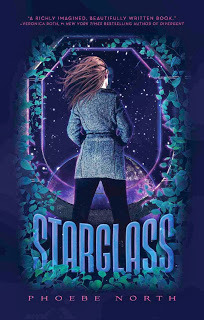
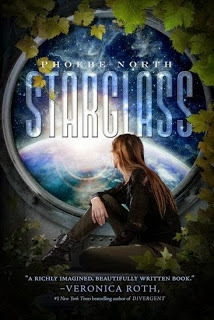
Here is a makeover I don't necessarily understand but I really, really like. Phoebe North's Starglass is getting a new look in paperback. On the left is the original hardcover, and I think it's a pretty good cover. I love the way the girl looks; even though her back is to the reader, we know there's something she wants and she's determined to go after it. It's entirely in her body language, her stance, and even the wind in her hair doesn't make her look like she's anything less than ready to conquer the challenge ahead of her (because what she wants is ahead of her there). I love that she is dressed like a teenager, too -- she's wearing a longer coat and pants. I think the font for the title is fun and fitting, and you really get a nice sense of the book's genre from the cover as a while. It's science fiction. Likewise, I think the violet coloring of the cover as a whole helps it stand out on the shelves. Few covers are that color, and fewer still within science fiction are that color. The Veronica Roth blurb running along the top only helps make a case for readers to pick up the book.
On the right is the newly designed paperback of Starglass, and I really like this one, too. I may even like it a little bit more than the hardcover. In many ways, it looks like Beth Revis's series, and I think the redesign tells readers that if they liked Revis's book, they'll probably want to give North's a shot. The new cover makes it even more obvious this book is science fiction, but it's not off-putting in any way. This is a girl looking down on Earth, and it's clear from her body language that she, too, is determined to take advantage of her future (but maybe in this case, without forgetting the place where she may have came from). Again, I love the choice in how the model is styled here, too: she's wearing pants and a killer pair of boots. Where I really liked the font for the title and author name on the hardcover, I love it on the paperback. There's something about the clear glass look that really ties this cover all together. Again, the Roth quote is included, though I do find it interesting that Roth's name is larger and much more obvious than North's name on the cover.
While both covers do it really well, I prefer the paperback just a tiny bit more.
What I really appreciate about this particular cover makeover, though, is that the second book in the series, Starbreak, fits with either the hardcover or the paperback look:

Readers and librarians who purchased the hardcover of Starglass don't have to worry about the second book in the series not looking like the first one at all. That is a huge reader service in the face of a redesign and one that as a librarian, I appreciate so much. It makes it clearer that these books belong together.
The paperback of Phoebe North's Starglass will be available July 15, 2014.
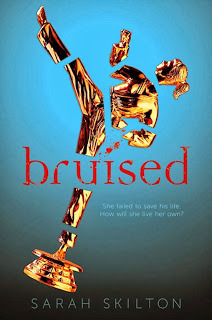
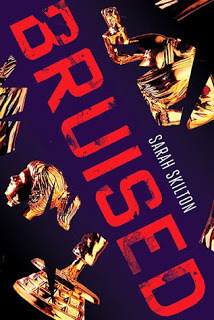
I'm going to put this redesign of Sarah Skilton's Bruised into the category of not understanding the intentions behind the redesign. On the left is the original cover, which is pretty excellent. I love the broken trophy of a tae kwon do girl -- it's a perfect representation of the story inside the book. The title font is nicely done, and I feel like the little splatters of blood hovering above the "i" tie into the reason why the tae kwon do girl is broken so well. The cover is fairly gender neutral, aside from the pony tail on the trophy, and it conveys the entirety of the story with very little. There is a tag line which reads "She failed to save his life. How will she live her own?" Again, a nice way to tie the cover together and tie it all right back to the story. Note that the author's name is large and across the bottom, and there are no blurbs on the front cover (something that carries over to the paperback, as well, but it's noteworthy because of how rare that seems to be).
The paperback redesign of Bruised is a head scratcher for me. It's essentially the same cover, but with the title made to be a lot bigger and in a different style and stretched diagonally across the cover, rather than centered through the middle. It's a nice font, but it's lacking the sort of tie-in to the story that the original has with the blood splatters. The author's name is now stacked on top of the title, and it's been made smaller, but brighter. I think it might be easier to read, but it's not as easy to find. As far as the image itself, we still have the broken trophy but it is not easy to identify as a broken trophy. The pieces are spread too far apart, and without studying it or having reference to what the original cover was, it's not entirely clear what the image it supposed to be. It definitely loses its identity as a tae kwon do trophy, since there aren't even legs in the shattered remains.
I can't comment on the color change from bright blue to a deep blue, since I think both work fine and both are not the memorable aspect of the cover. For me, hands down, the hardcover is the winner here.
Sarah Skilton's Bruised will be available in paperback on April 15, 2014.
What do you think? Which covers in these pairs do you prefer? Have you seen any other noteworthy hardcover to paperback changes lately? I keep a list of changes when I see them because I love thinking about the whats and whys of redesign.






 Related Stories& Titled: Ampersands in YA FictionHardcover to Paperback: Five Changes to Check OutHardcover to Paperback Switches: 6 to Consider
Related Stories& Titled: Ampersands in YA FictionHardcover to Paperback: Five Changes to Check OutHardcover to Paperback Switches: 6 to Consider
In this edition of hardcover to paperback, most of the titles I wanted to talk about didn't have huge changes. Many maintained a look they'd had in hardcover with slight tweaks (though one of the covers below got an entirely new look). None of these are bad changes, but some of them make me wonder what the change intends to do for the book in terms of selling it. If it's not that different from the original, it makes me wonder why the change happened at all.
Let's start with the big change.


The hardcover edition of Tiffany Schmidt's Send Me a Sign is graphic and text driven -- it plays into the idea of superstitions, which is a big element of the book. Mia, the main character, believes in signs. To me, the cover has a small element of sadness to it. While it's bright, when you know what the book is about, the cover may suggest that there's not necessarily a happy ending to the story. It's a book about a girl diagnosed with cancer, and the white dandelion with its petals floating away may suggest death more than it does life. In many ways, the cover doesn't tell you a whole lot about the story, though I think it does look like a YA novel. The swirly font may play into that a little bit. Note that there is a blurb.
The paperback cover of Send Me a Sign is something completely different. While anchored by one image of a boy and a girl, rather than font and a non-person image, it doesn't do away with the original design completely. The font for the title is still swirly, and there is an homage to the signs and superstitions element to the plot with the four-leaf clover as the dot in the "i" for sign. Although I think the image itself isn't entirely memorable -- the couple looks like a couple that graces many a YA cover -- what I love is that this cover speaks a lot more to both the content of the book and the readership of the book. There is a big romantic element to the story, and this image drives that message much more than the hardcover does. Teen readers who see this cover will know much more readily whether this is a book they want to read or not because it looks like many other books featuring similarly appealing story lines.
I happen to like both of the covers for this one. The first because it's different from a lot of YA covers out there, and the second because it speaks better to the story.
Send Me a Sign will be available in paperback on January 14, 2014.


Jennifer McGowan's Maid of Secrets is getting one of those makeovers I'm not sure I completely understand. On the left is the original hardcover. It's not necessarily the kind of cover that stands out, but it also speaks to the content of the book. The girl has a great look on her face, including a fierceness in her eyes with just enough of a smile that it's not a scary look. I love the dagger in her hands, since it offers up a little bit of an idea of the time frame of the story and even a little bit about what may be at stake. The font for the title isn't necessarily memorable, but it works with the image to allow that image to stand out. And note that there is a blurb on the cover -- a simple "Winning," from Robin LaFevers, who is probably the perfect name to have gracing the cover of a book like this with a blurb. In many ways, I'd say the look of this particular cover suggests it's a worthwhile read alike to LeFevers's own series. I'm a big fan of cover alikes, since it does a lot of service to readers who want a book like one they've read before but don't necessarily want to ask for help. It's passive and easy.
The paperback look of the cover isn't bad, but it also doesn't do anything different. Sure, there are now three girls instead of a single one. What's weird is that this cover seems to remove a lot of the power that the hardcover had, making it almost more of a story about the three girls than about power or intrigue. The girl in the middle is having her hair brushed, and the focus of the image is no longer on the expression on one girl's face -- it's instead on the dresses the three girls have. I think in many ways there is a removal of power in this cover. There is still a dagger in the girl on the right's hand, but look at how it's much more an accessory to her dress than it is a tool she plans on using. The new cover changes up the title font, and I quite like it, though I think there is a lot more artistry at play with it than there is necessarily power. There's no longer a blurb on the cover, as it's been replaced with a note that this book is the first in a series -- I actually find that helpful to be on the cover, since it will help readers know there are other books to come.
That said, will readers think that the paperback version of Maid of Secrets may appeal to readers who liked Robin LaFevers's series? I'm not entirely sure. I don't think they'll be turned off by it, but I think they may not make the connection as readily. While I like both covers, they convey much different things, and I think the hardcover edges out the paperback for me.
The paperback edition of McGowan's book will be available June 24, 2014.


The Tragedy Paper by Elizabeth Laban fascinates me from a cover perspective. It's not entirely memorable, but it's also not entirely forgettable either. There are a lot of elements in the cover that make it both: it's a guy running away from something in a wooded area. There's snow on the ground and snow falling. I feel like this describes a ton of covers, but I also feel like it describes this cover. I find the font for the title distracting and hard to read because it's been made to look blurry and jagged. Since it's white, that only adds to the challenge of not feeling like my eyes struggle to focus on it (basic design principles suggest that white font on a dark background is simply harder to read, no matter what). Note that the blurb for this book comes from an adult fiction author -- Jennifer Weiner. That says a lot to me, too, particularly that this book may be aiming to be a crossover hit, as well as a book that is trying to be on trend with blurbs from well-known, New York Times Bestselling adult authors (see John Green's blurb of The Fault in Our Stars from Jodi Picoult). The cover is being packaged in such a way that it looks like the kind of book that will receive award consideration or recognition. It's an iconic-like cover with a blurb from someone well-known in the business, even beyond the YA world. This is not a bad cover.
But that paperback. Let's talk about a cover that is meant for adults and not teens.
The cover for the paperback looks like a movie poster, and not in a good way. There is far too much going on in terms of design, with the original boy running through the woods layered on top of a girl who is looking away with a sadness in her eyes. I have a hard time believing the model looks like a teenager, too -- she looks like a twenty-something, if not even older than that. But back to the boy running through the woods layer. I'm curious why it is he's suddenly blurry now, too? And why did they choose to make the title font even more blurry than they were in the original hardcover look? I think they did a service in not making the author font blurry and also by making it not white, though that might be the strongest aspect of this cover. Also note that the blurb from Weiner was relocated to a position that makes it more prominent -- upper right-hand corner. The Tragedy Paper's paperback cover looks like an adult trade paperback much more than it does a YA paperback. It loses an iconic YA look to it with the layering and further blurring of font, though I think that this book looks like one more adults would pick up than the one on the left.
That said, I am not a fan. I prefer the hardcover look of this one without question. The Tragedy Paper will be available in paperback on February 11, 2014.


Here is a makeover I don't necessarily understand but I really, really like. Phoebe North's Starglass is getting a new look in paperback. On the left is the original hardcover, and I think it's a pretty good cover. I love the way the girl looks; even though her back is to the reader, we know there's something she wants and she's determined to go after it. It's entirely in her body language, her stance, and even the wind in her hair doesn't make her look like she's anything less than ready to conquer the challenge ahead of her (because what she wants is ahead of her there). I love that she is dressed like a teenager, too -- she's wearing a longer coat and pants. I think the font for the title is fun and fitting, and you really get a nice sense of the book's genre from the cover as a while. It's science fiction. Likewise, I think the violet coloring of the cover as a whole helps it stand out on the shelves. Few covers are that color, and fewer still within science fiction are that color. The Veronica Roth blurb running along the top only helps make a case for readers to pick up the book.
On the right is the newly designed paperback of Starglass, and I really like this one, too. I may even like it a little bit more than the hardcover. In many ways, it looks like Beth Revis's series, and I think the redesign tells readers that if they liked Revis's book, they'll probably want to give North's a shot. The new cover makes it even more obvious this book is science fiction, but it's not off-putting in any way. This is a girl looking down on Earth, and it's clear from her body language that she, too, is determined to take advantage of her future (but maybe in this case, without forgetting the place where she may have came from). Again, I love the choice in how the model is styled here, too: she's wearing pants and a killer pair of boots. Where I really liked the font for the title and author name on the hardcover, I love it on the paperback. There's something about the clear glass look that really ties this cover all together. Again, the Roth quote is included, though I do find it interesting that Roth's name is larger and much more obvious than North's name on the cover.
While both covers do it really well, I prefer the paperback just a tiny bit more.
What I really appreciate about this particular cover makeover, though, is that the second book in the series, Starbreak, fits with either the hardcover or the paperback look:

Readers and librarians who purchased the hardcover of Starglass don't have to worry about the second book in the series not looking like the first one at all. That is a huge reader service in the face of a redesign and one that as a librarian, I appreciate so much. It makes it clearer that these books belong together.
The paperback of Phoebe North's Starglass will be available July 15, 2014.


I'm going to put this redesign of Sarah Skilton's Bruised into the category of not understanding the intentions behind the redesign. On the left is the original cover, which is pretty excellent. I love the broken trophy of a tae kwon do girl -- it's a perfect representation of the story inside the book. The title font is nicely done, and I feel like the little splatters of blood hovering above the "i" tie into the reason why the tae kwon do girl is broken so well. The cover is fairly gender neutral, aside from the pony tail on the trophy, and it conveys the entirety of the story with very little. There is a tag line which reads "She failed to save his life. How will she live her own?" Again, a nice way to tie the cover together and tie it all right back to the story. Note that the author's name is large and across the bottom, and there are no blurbs on the front cover (something that carries over to the paperback, as well, but it's noteworthy because of how rare that seems to be).
The paperback redesign of Bruised is a head scratcher for me. It's essentially the same cover, but with the title made to be a lot bigger and in a different style and stretched diagonally across the cover, rather than centered through the middle. It's a nice font, but it's lacking the sort of tie-in to the story that the original has with the blood splatters. The author's name is now stacked on top of the title, and it's been made smaller, but brighter. I think it might be easier to read, but it's not as easy to find. As far as the image itself, we still have the broken trophy but it is not easy to identify as a broken trophy. The pieces are spread too far apart, and without studying it or having reference to what the original cover was, it's not entirely clear what the image it supposed to be. It definitely loses its identity as a tae kwon do trophy, since there aren't even legs in the shattered remains.
I can't comment on the color change from bright blue to a deep blue, since I think both work fine and both are not the memorable aspect of the cover. For me, hands down, the hardcover is the winner here.
Sarah Skilton's Bruised will be available in paperback on April 15, 2014.
What do you think? Which covers in these pairs do you prefer? Have you seen any other noteworthy hardcover to paperback changes lately? I keep a list of changes when I see them because I love thinking about the whats and whys of redesign.







 Related Stories& Titled: Ampersands in YA FictionHardcover to Paperback: Five Changes to Check OutHardcover to Paperback Switches: 6 to Consider
Related Stories& Titled: Ampersands in YA FictionHardcover to Paperback: Five Changes to Check OutHardcover to Paperback Switches: 6 to Consider
Published on October 21, 2013 22:00
October 20, 2013
October Debut YA Novels
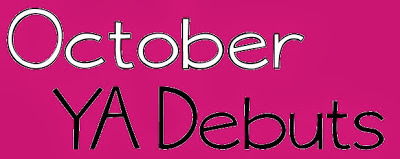
It's October, so let's take a look at the debut novels out this month, some already release and some to come in the next couple of weeks. As usual, I define debut as actual first-published novel, so I've done by best to leave out those first-time YA novels or those books by authors who have published before but under other names. You can check out prior installments of the debut roundups by checking out September's list and going backwards from there. If I've missed a traditionally-published debut YA novel out in October, let me know in the comments! I've also tried to link up to our reviews. As usual, all descriptions are from WorldCat, unless otherwise noted.
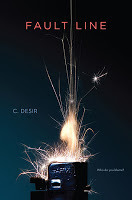
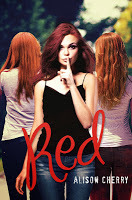
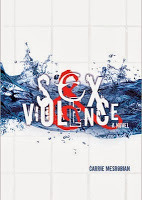
Fault Line by Christa Desir: After his gilfriend, Ani, is assaulted at a party, Ben must figure out how he can help her to heal, if he can help her at all. Reviewed here.
Red by Alison Cherry: In a town that values red hair above all else, someone threatens to expose pageant contestant Felicity's secret about her coppery locks.
Sex & Violence by Carrie Mesrobian: Sex has always come without consequences for Evan. Until the night when all the consequences land at once, leaving him scarred inside and out. Reviewed here.

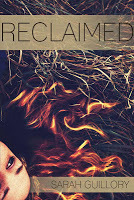
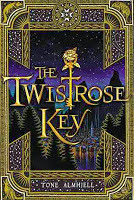
Entangled by Amy Rose Capetta: Seventeen-year-old Cade, a fierce survivor, feels alone in the universe until she learns that she was created in a lab in 3112 and entangled at a quantum level with a boy named Xan, sending her on a galaxy-spanning journey toward a real connection.
Reclaimed by Sarah Guillory: Jenna Oliver doesn’t have time to get involved with one boy, let alone two. All Jenna wants is to escape her evaporating small town and her alcoholic mother. She's determined she'll go to college and find a life that is wholly hers—one that isn't tainted by her family's past. But when the McAlister twins move to town and Jenna gets involved with both of them, she learns the life she planned may not be the one she gets. Ian McAlister doesn't want to start over; he wants to remember. Ian can’t recall a single thing from the last three months—and he seems to be losing more memories every day. His family knows the truth, but no one will tell him what really happened before he lost his memory. When he meets Jenna, Ian believes that he can be normal again because she makes not remembering something he can handle. The secret Ian can’t remember is the one Luke McAlister can’t forget. Luke has always lived in the shadow of his twin brother until Jenna stumbles into his life. She sees past who he’s supposed to be, and her kiss brings back the spark that life stole. Even though Luke feels like his brother deserves her more, Luke can’t resist Jenna—which is the trigger that makes Ian's memory return. Jenna, Ian, & Luke are about to learn there are only so many secrets you can keep before the truth comes to reclaim you. (via Goodreads).
Twistrose Key by Tone Almhjell: After finding a mysterious key, eleven-year-old Lin Rosenquist finds herself in the wintery world of Sylver where all the inhabitants were once either beloved pets or tamed wild animals, and must find the missing Winter Prince before she can return home.
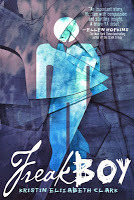
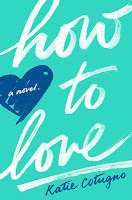
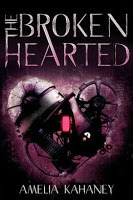
Freakboy by Kristin Elizabeth Clark: Told from three viewpoints, seventeen-year-old Brendan, a wrestler, struggles to come to terms with his place on the transgender spectrum while Vanessa, the girl he loves, and Angel, a transgender acquaintance, try to help.
How to Love by Katie Cotugno: A tumultuous love affair between Reena and Sawyer ends when Sawyer abruptly abandons their Florida town, causing Reena to bear their child alone and struggle with mistrust when Sawyer returns three years later.
The Brokenhearted by Amelia Kahaney: When seventeen-year-old Anthem Fleet is suddenly transformed into an all-powerfull superhero, she must balance her old life with the dark secret of who she has become.
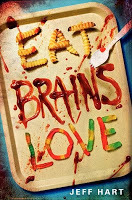
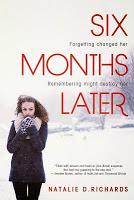
Eat, Brains, Love by Jeff Hart: New Jersey teens Jake Stephenson and Amanda Blake are turning into zombies and, having devoured half of their senior class, they are on the run, pursued by teen psychic Cass, a member of a government unit charged with killing zombies and keeping their existence secret.
Six Months Later by Natalie D. Richards: Chloe didn't think about it much when she nodded off in study hall on that sleepy summer day. But when she wakes up, snow is on the ground and she can't remember the last six months of her life. Before, she'd been a mediocre student. Now, she's on track for valedictorian and being recruited by Ivy League schools. Before, she never had a chance with super jock Blake. Now he's her boyfriend. Before, she and Maggie were inseparable. Now her best friend won't speak to her. What happened to her? And why can't she remember?







 Related StoriesSeptember Debut YA NovelsJuly YA Debut Novels
Related StoriesSeptember Debut YA NovelsJuly YA Debut Novels
Published on October 20, 2013 22:00
October 19, 2013
The Million Mark.

Dearest readers of STACKED,
Thank you.
Thank you.
Thank you.
We started this blog 4.5 years ago (to the day). We wanted a place to share our thoughts on books, and since then, we have found an amazing community of readers, of advocates, of people as passionate as we are about books and sharing them. We've made some incredible friends, and we've been lucky enough to write and write and write and have people not just share their thoughts with us, but they've shared our thoughts with other people.
It is an incredible feeling to know people want to hear what we have to say.
Today marks our 1 millionth hit since we began our blog. ONE MILLION UNIQUE HITS since we began this blog 4.5 years ago. That's an incredible number, and it's made even more mind-boggling to know that half of that has been from the last year alone.
Thank you.
Thank you.
Thank you.
We want to thank you not just in a post, but we want to thank our readers -- long-time loyal ones and brand new readers alike -- with a pair of giveaways that we are very excited about. We've never done something like this before, but we are excited to give it a whirl.
The first giveaway is what you may consider fairly straightforward. We've got a pile of YA books (and some advanced reader copies) we want you to have. There will be between 8 and 10 titles total up for grabs, a mix of genres, including the following:
Yesterday by CK Kelly Martin & the brand-new sequel Tomorrow
What Goes Around by Courtney Summers
The Burning Sky by Sherry Thomas
Half Lives by Sara Grant
Three Times Lucky by Sheila Turnage on audio
The Probability of Miracles by Wendy Wunder on audio
An advanced reader's copy of Tin Star by Cecil Castellucci
An advanced reader's copy of Love Letters to the Dead by Ava Dellaira
Any 2013 hardcover or paperback YA novel of the winner's choice
As well as a handful more. Kimberly and I want to build a really nice mix of stuff to give away, so we're scouring our brains to give away some favorites, as well as some new things we think our readers would like.
The only restriction for this giveaway is that you are a US or Canadian resident, since we'll be covering shipping.
Our second giveaway is a little bit different, and we aren't entirely sure how this will go over, but it's one we're VERY excited to try out. We're going to give away a 30 page manuscript critique. Kimberly and I will both read the first thirty pages of your middle grade or young adult manuscript and offer a boatload of feedback for you -- what we think is working, what we think could be improved, and more. We'll include not just a letter, but marginal commentary throughout.
Because we can do this one electronically, we're happy to offer this giveaway for anyone who has a manuscript in English.
You can enter either giveaway or you can enter both. We'll choose our random winners Monday, November 11.
Thanks for being such supportive and amazing readers -- we really appreciate all of your feedback, your sharing, and your thoughts on our blog.
-- Kelly & Kimberly
Loading...







 Related StoriesWhat Goes Around by Courtney Summers -- A GiveawayTwitterview: Phoebe NorthTwitterview: Karen Healey + Giveaway of When We Wake
Related StoriesWhat Goes Around by Courtney Summers -- A GiveawayTwitterview: Phoebe NorthTwitterview: Karen Healey + Giveaway of When We Wake
Published on October 19, 2013 22:00



